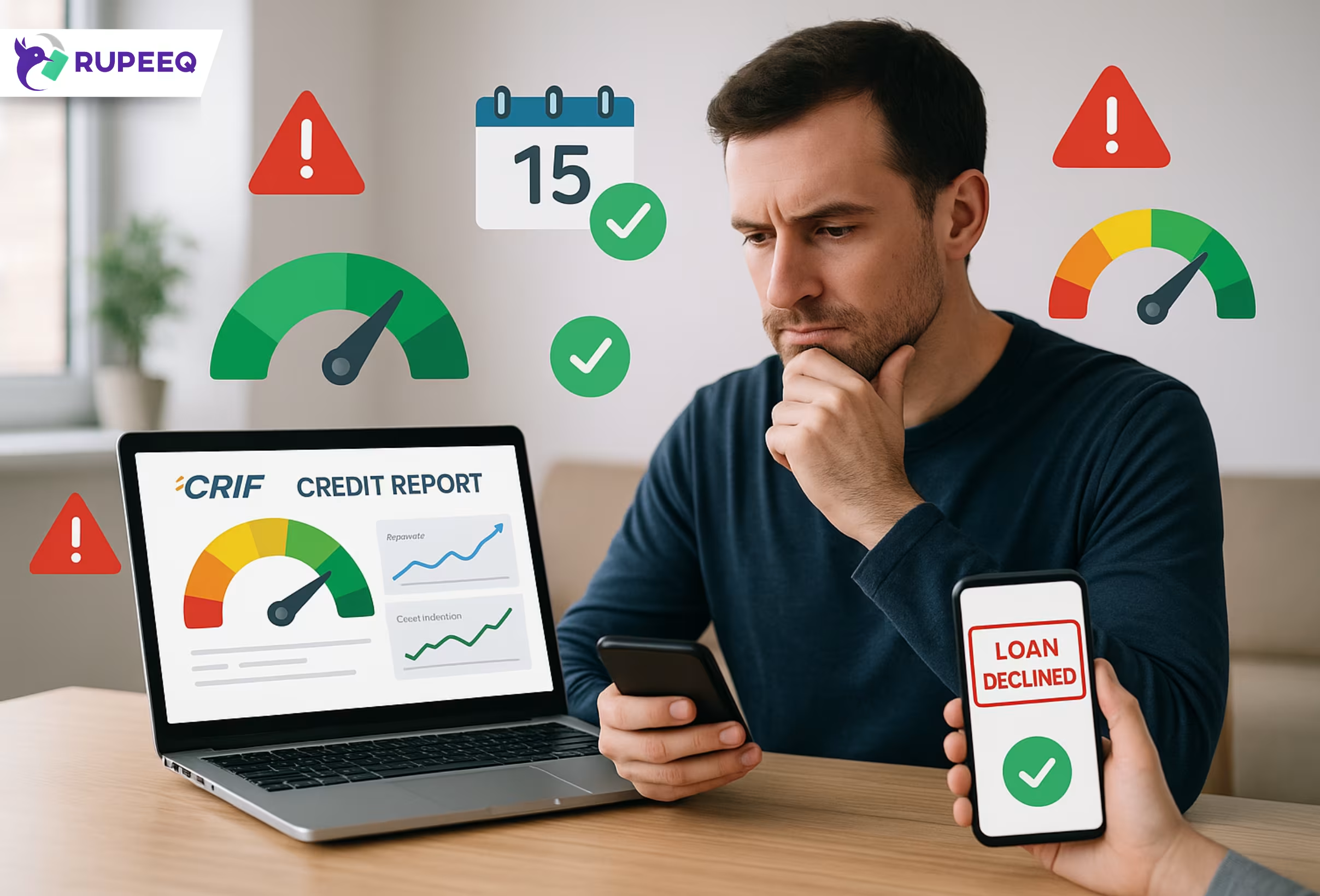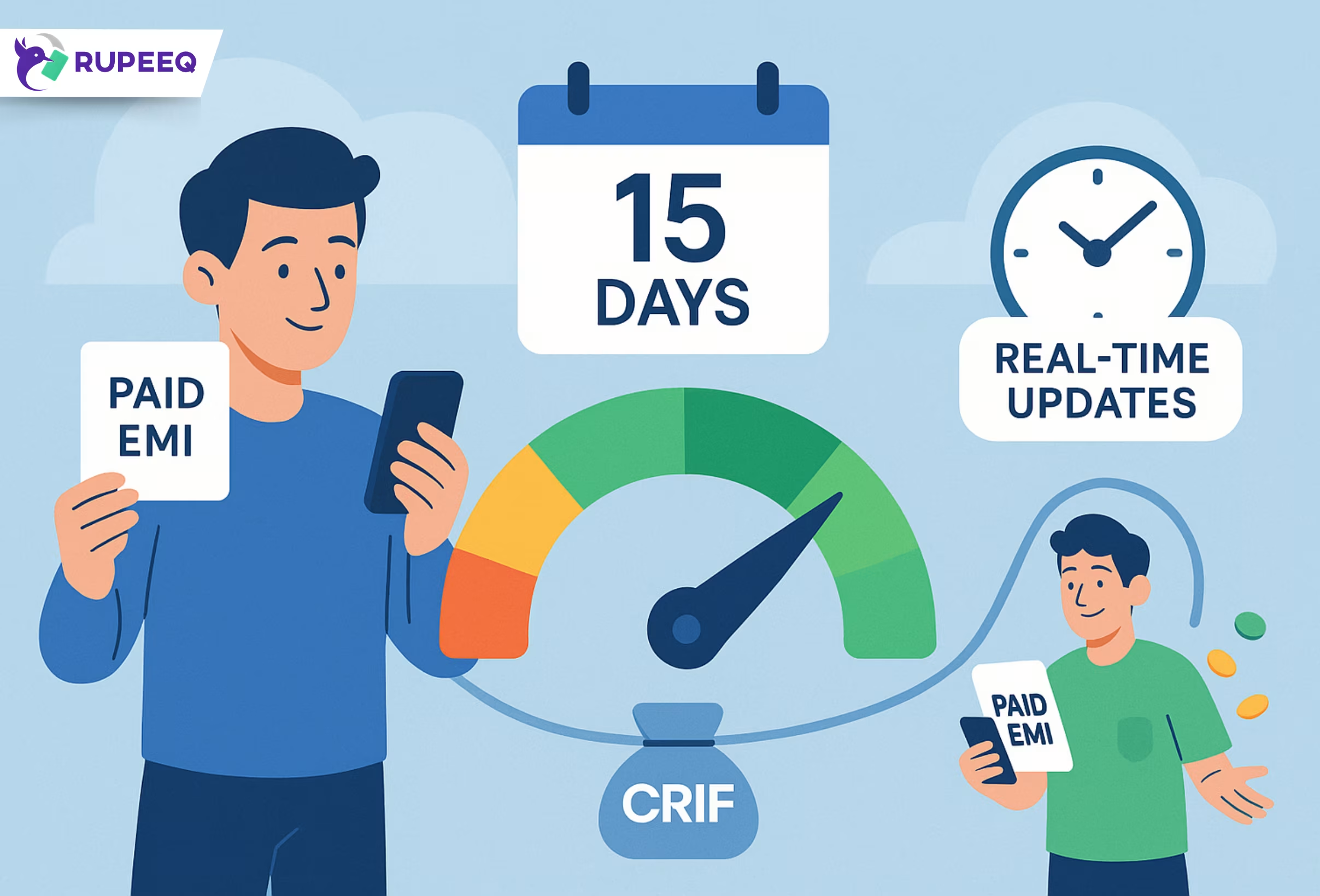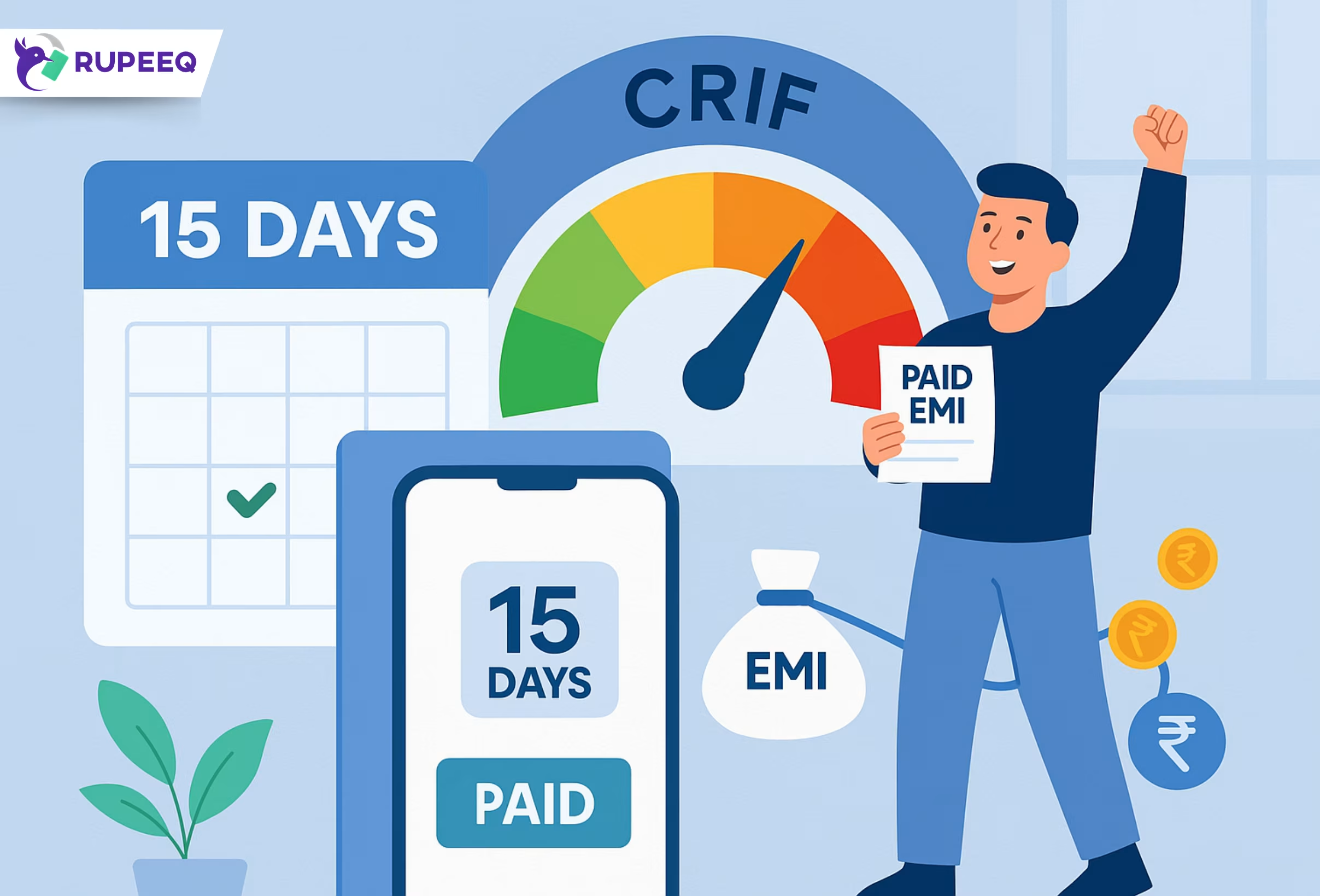Getting a loan or credit card declined on RupeeQ can be disheartening—especially when you’re counting on the funds. However, a rejection doesn’t mean you’re out of options. In many cases, it could simply be due to a mismatch between your credit profile and the lender’s eligibility criteria at that specific time. The smartest next step? Check your latest CRIF report update before reapplying.
Your CRIF credit score and report play a crucial role in loan approvals and pre-approved offers. And with new RBI norms making reporting more frequent, it’s now easier to make changes that show up sooner.
Why CRIF Score Matters on RupeeQ
Before any offer appears on your RupeeQ dashboard, the platform evaluates your creditworthiness through CRIF High Mark, one of India’s RBI-approved credit bureaus. Lenders access your updated CRIF profile to check your score, repayment history, existing loans, and delinquencies before making an offer.
Even if you were eligible a month ago, a recent delay in EMI or a new inquiry might reflect in your CRIF report and lead to a rejection today.
RBI’s 15-Day Rule: A Gamechanger for Reapplying
In January 2025, the RBI mandated all lenders to report borrower data to credit bureaus like CRIF every 15 days, instead of once a month. This means:
- Loan closures, part-payments, and score improvements are reflected faster.
- Your CRIF report can now be refreshed within two weeks of corrective action.
- You don’t need to wait a full month to see updated results.
RupeeQ Tip: If your rejection was due to outdated credit data, check again after 15 days. Updated information could unlock new offers.
Top Reasons for Decline on RupeeQ
Let’s take a look at the most common reasons borrowers are declined:
| Reason | Impact on CRIF Score |
| Missed or delayed EMI | Drops score by 50–100 points |
| Too many recent loan/credit inquiries | Seen as credit-hungry behavior |
| High credit utilization | Reflects over-dependence on credit |
| Existing high-value loans | Raises repayment risk perception |
| Inaccurate information | Can cause wrongful rejections |
How to Check Your CRIF Update Post Decline
If your loan was declined on RupeeQ, here’s how to proactively check your latest credit standing:
1. Request Free CRIF Report via RupeeQ
You can get a free CRIF credit report from RupeeQ in minutes. It gives you access to:
- Updated CRIF score
- Active loan accounts
- Repayment history
- Any defaults or red flags
2. Look for New Changes
Check for:
- New loan closures
- EMI payments posted
- Errors corrected (if you had disputed something)
3. Compare with Old Report
See what’s changed since your last attempt. If your score has improved or errors are corrected, you may now be eligible.
RupeeQ Tip: Avoid reapplying too soon without any report changes—it could lead to repeated rejections, which further hurt your credit profile.
Steps to Take Before Reapplying on RupeeQ
1. Review Your Decline Reason (if known)
Sometimes RupeeQ may share a decline reason in your dashboard or via email. If not, your CRIF report will have clues.
2. Settle Overdue Payments
If an EMI or credit card bill is pending, clear it immediately and wait 15 days for it to reflect.
3. Lower Credit Utilization
If your credit card usage is above 50–60%, try to pay off some balances. This will raise your creditworthiness.
4. Raise a Dispute If There’s an Error
If your report shows incorrect loan amounts, overdue flags, or duplicate accounts, raise a CRIF dispute online. Most issues are resolved within 30 days.
5. Wait for Report to Refresh
Give 15–30 days for changes to reflect as per RBI’s new rule. Set a calendar reminder if needed.
What Happens If You Reapply Without Any Credit Update?
Reapplying immediately after being declined—without taking corrective steps or waiting for your CRIF report to refresh—can backfire. Here’s why:
- Repeated hard inquiries lower your credit score further.
- Lenders may tag you as high-risk if they see multiple back-to-back applications.
- You may get fewer or lower-value offers in the future.
Always wait for your CRIF profile to reflect positive changes before trying again.
Smart Strategy: Use RupeeQ to Monitor CRIF-Linked Offers
With RupeeQ, you don’t need to apply manually each time. Once your CRIF score improves, RupeeQ automatically re-checks eligibility and refreshes your dashboard.
Here’s how to stay proactive:
- Check for new offers every 15–30 days.
- Subscribe to RupeeQ updates to know when new options are available.
- Use the credit health tracker powered by RupeeQ ACE for tips based on your report.
RupeeQ Tip: If your score rises above key milestones like 650 or 700, re-check instantly. Many lenders change their thresholds at these cut-offs.
When to Reapply After Getting Declined
| Reason for Decline | Suggested Action | Wait Time Before Reapplying |
| EMI missed | Pay overdue, wait for update | 15–30 days |
| Credit limit maxed out | Reduce usage below 50% | 15–20 days |
| Too many recent loans | Wait for 1–2 EMIs to pass | 45–60 days |
| CRIF dispute open | Wait for resolution | 30–45 days |
| Score < 600 | Focus on improving score | 60–90 days |
Final Thoughts
Getting declined on RupeeQ can be a wake-up call—but not a dead end. With RBI’s updated 15-day credit reporting and RupeeQ’s real-time eligibility engine, you’re never too far from a better offer. The key is to act smart—check your CRIF report, fix what’s wrong, and try again when the timing’s right.
Loan eligibility today is all about dynamic credit health. RupeeQ ensures that as soon as your CRIF profile improves—even slightly—you’re back in the game.







